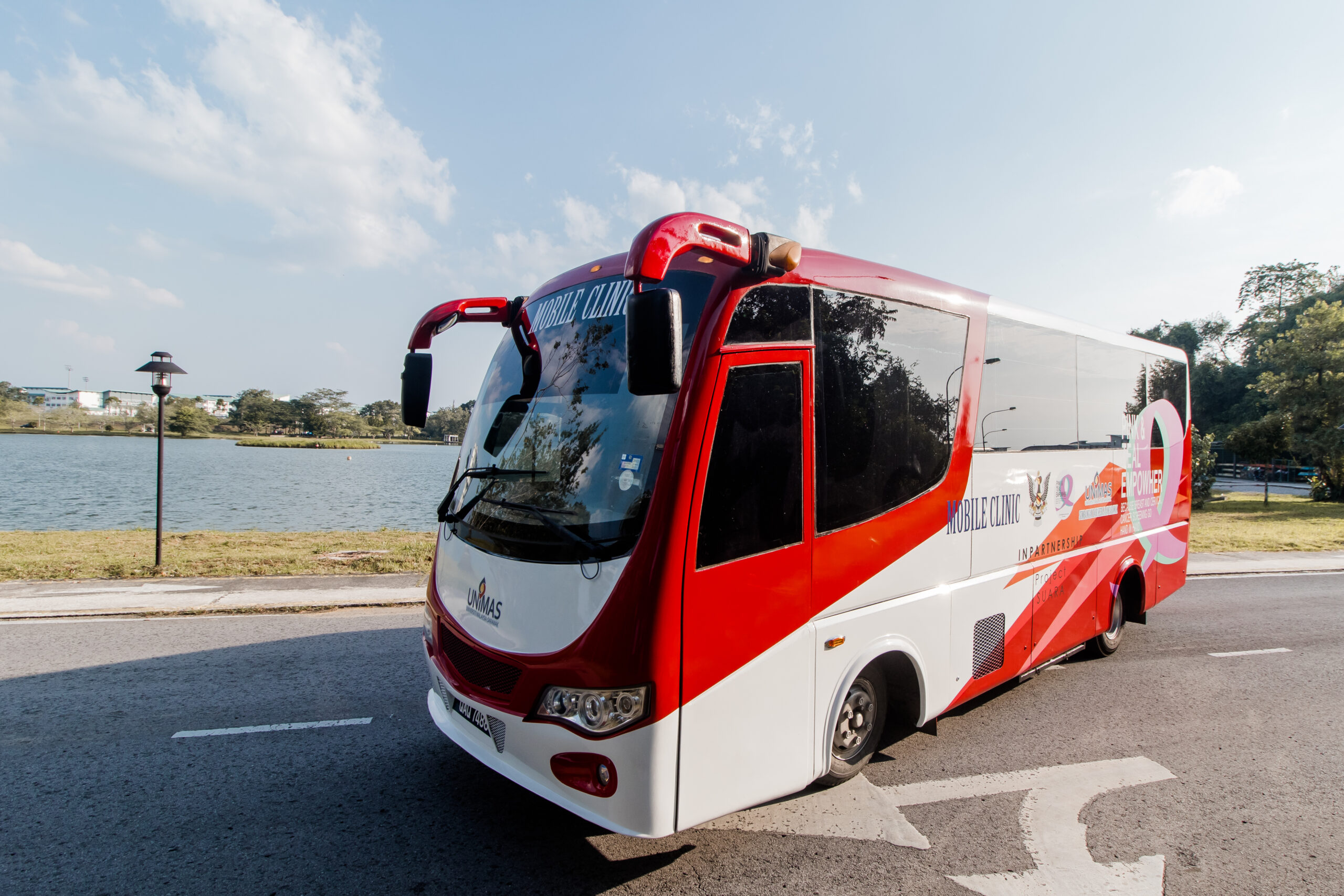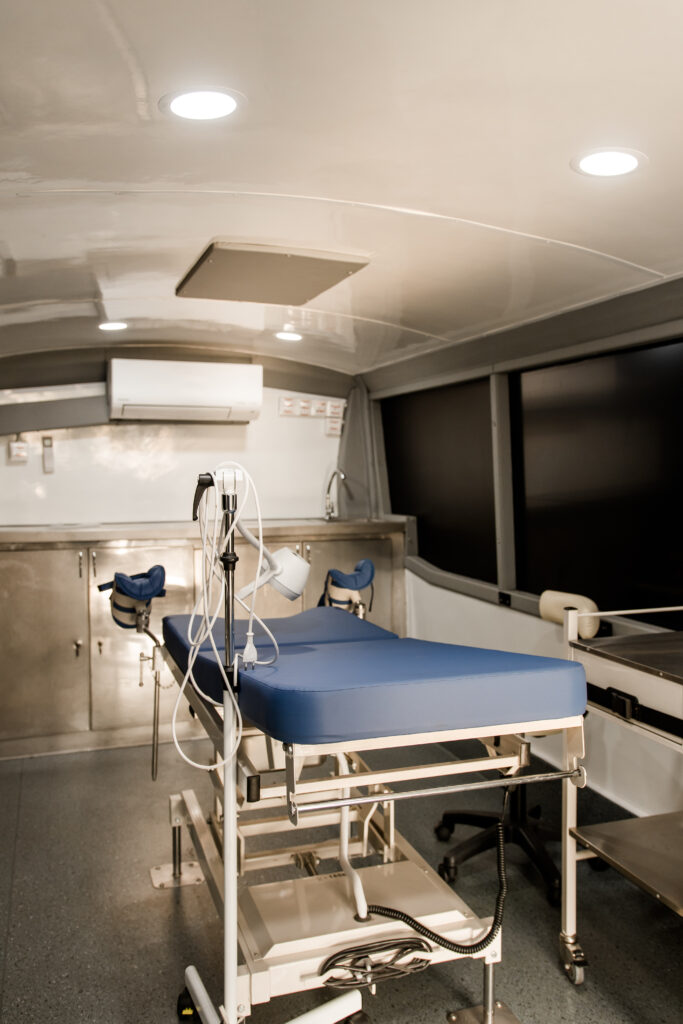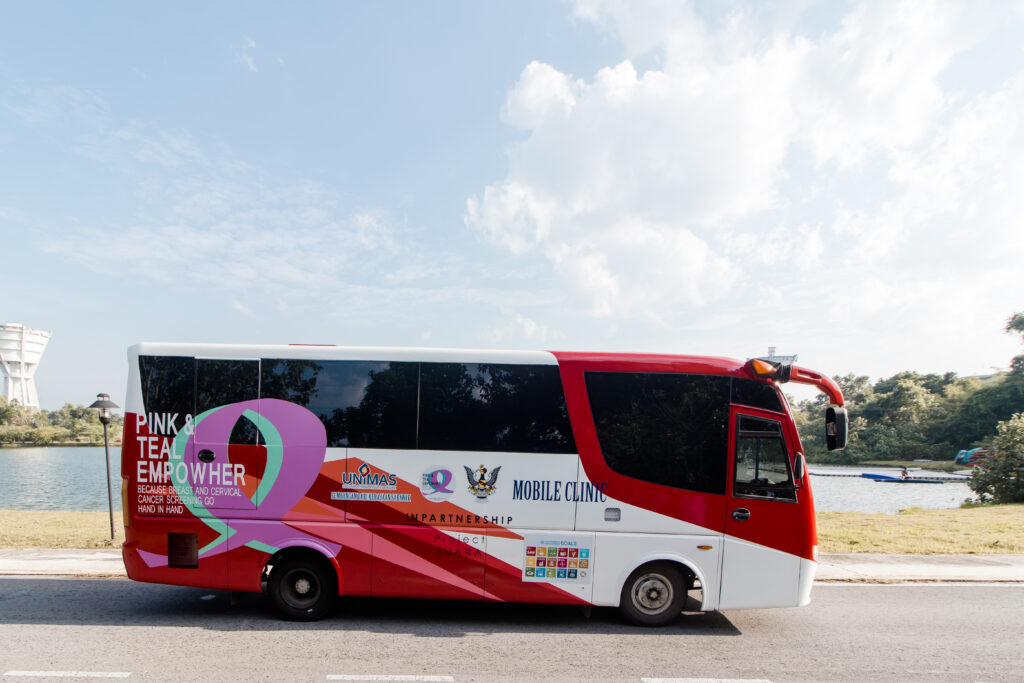
The launch of the mobile screen-and-treat unit is a symbol of Sarawak’s commitment through various agencies to eliminate cervical cancer as a public health concern (target incidence of <4:100 000) through vaccination, screening and treatment.
It employs the targets set by the world health organisation:
- 90% of adolescent girls vaccinated
- 70% of women screened with a high-powered test by the age of 35 and again by the age of 45
- 90% of women treated: including precancerous stage, cancer treatment and palliative care by 2030
Sarawak has the highest incidence of cervical cancer in Malaysia with a rate of 12.1 per 100,000 population. This surpasses the national incidence rate of 10.2 per 100,000. Cervical cancer is a highly preventable disease, with up to 93% of cases being preventable through early detection and intervention. It is considered the most preventable cancer known. When cervical cancer is detected and treated at stage 1, the 5-year survival rate is as high as 95%. Unfortunately, in our region, the overall survival rate is only 50% due to many women presenting at later stages of the disease. On average, 2 new cases of cervical cancer are diagnosed every week in Sarawak; only 1 of them will survive the treatment process, assuming they are fit enough to undergo treatment (the mortality rate is 0.5).
While the national cervical cancer prevention program is the same age as that of advanced, high-income countries (commenced mid 80’s), we have not seen the halving of cervical cancer incidences and death rates said countries enjoy. Unfortunately, cervical cancer remains prevalent in lower-middle income nations, highlighting the lack of equitable access to proper healthcare. Numerous attempts have been employed to improve the uptake of cervical cancer screening, particularly using the conventional pap smear with a turnaround time of 6-12 weeks. However, these efforts have been less successful due to the need for adequate coverage and reliable follow-up. Even with these measures, the screening uptake by pap smear is only 3 out of 10 women, and the key performance indicators are achieved by frequently repeating the test for the same group of women. Ultimately, the hallmark of a good screening program is not the number of tests a woman has in her lifetime, but the number of women the program is able to test.
Enter SUARA: since 2018, this program has been tailoring cervical cancer screening outreach to fit our rural and remote rural settings. We meet our women where they need us most: in balais, ruais and remin dyak.
At the outset, by visual inspection with acetic acid, we were able to see with immediacy the lesions that required early intervention. Working with resident O&G specialists, we streamlined the follow-up process until treatment. However, despite our efforts to promptly follow up with our patients, we experienced a 50% dropout rate. In 2020, we addressed this issue during a meeting with the Premier. Thanks to the infusion of funding from the Premier’s office and Ministry of Finance alongside a bus generously donated by the Vice Chancellor of UNIMAS, we were able to put together a mobile screen-and-treat unit. This mobile unit is the first of its kind in the nation and also facilitates Human Papillomavirus (HPV) screening, bringing the lab to the people. Furthermore, all the equipment can be disassembled for transportation on long boats, 4WD vehicles, and helicopters, as we are aware that in Sarawak, many settlements are located deep into the interior where roads may not reach.
Program SUARA is the pioneer of HPV screening in Sarawak and has established the first HPV lab that serves primarily the rural community through our “Sigek kitak sigek kamek” program – for every HPV test bought by the urban women, the proceeds are used to donate one HPV test to the rural women folk. HPV is as the common cold virus and 8:10 of sexually active persons have it. Our task is to identify the highly oncogenic strains and the women with persistent infection as this causes >95% of cervical cancer. With effective HPV screening, we can triage our women to high and low-risk groups; zooming in our attention and resources to the high-risk with superior precision. Cervical cancer elimination by a highly powered test, like the HPV test is like using a sniper to eliminate a target while the previous older method of Pap Smears (now being phased out and placed in Medical Museums), was akin to using a buckshot in the wild.


Moreover, under the Medical Faculty’s O&G Rotation, students are exposed to key elements of cervical cancer elimination highlighting the Sarawakian Perspective as we tailor our approach to different urban and rural settings. Our medical students are the future of health care. Cervical cancer elimination may not be achieved in this lifetime, but we can certainly inspire the minds and equip the hands of the generation that could.
Our best efforts aside, awareness of this program is still not widespread. Our modus operandi is a mix of invitations from the local YBs and seeking out the local health clinics that UNIMAS naturally serves in the Samarahan-Asajaya and Serian regions. To date, we have been to Ulu Padawan, Singgai, Sebako, Bario, Dalat, and Long Leng, just to name a few. Our HPV tests have reached Lio Mato, Long Banga, Ulu Beladin and Ba’ Kelalan through the joint venture with medical officers in charge.
The pandemic set our program back significantly as our doctors and nurses were pulled to become front liners and then served in the vaccination centres. It is safe to say that after nursing numerous types of exhaustion, anxiety and depression in varying degrees, we are finally able to launch forward with Program SUARA.
It is our hope to leave no woman behind in cervical cancer vaccination, screening and treatment. As we aim to comprehensively reach areas of our southern region, our plans include training dedicated teams to serve the central and northern regions. Granted, this takes time so we will continue to send teams as the need arises. We have seen the latest need arise in the areas served by Long Bedian health clinic region after our latest trip to Long Leng and hope to return soon to complete the work.
Furthermore, we intend to include minor procedures that will aid in the early detection of other women’s cancers – namely that of the womb lining (endometrium) by securing a portable office hysteroscopy set. This procedure is a minimally invasive endoscopic procedure used in the evaluation of abnormal periods with high accuracy (sensitivity and specificity) for endometrial cancer detection. This way, we not only bring life-altering services to the women (which reduces their logistic burden), but we also help decongest the Sarawak General Hospital wait time which is booked up until December.
As Program SUARA continues to bridge the gap in healthcare access and inspire future healthcare professionals, it reaffirms Sarawak’s dedication to building a healthier, more resilient society. The journey to eliminate cervical cancer may be long, but with SUARA leading the way, the hope for a brighter, cancer-free future shines ever stronger. Through vaccination, screening, and treatment, Program SUARA’s resounding message is clear: No woman shall be left behind in the fight against cervical cancer.
By: Dr Abigail Rembui anak Jerip (Faculty Medicine and Health Sciences)
Photos: Melvin Jangga Rupitan (UNIMAS Corporate)